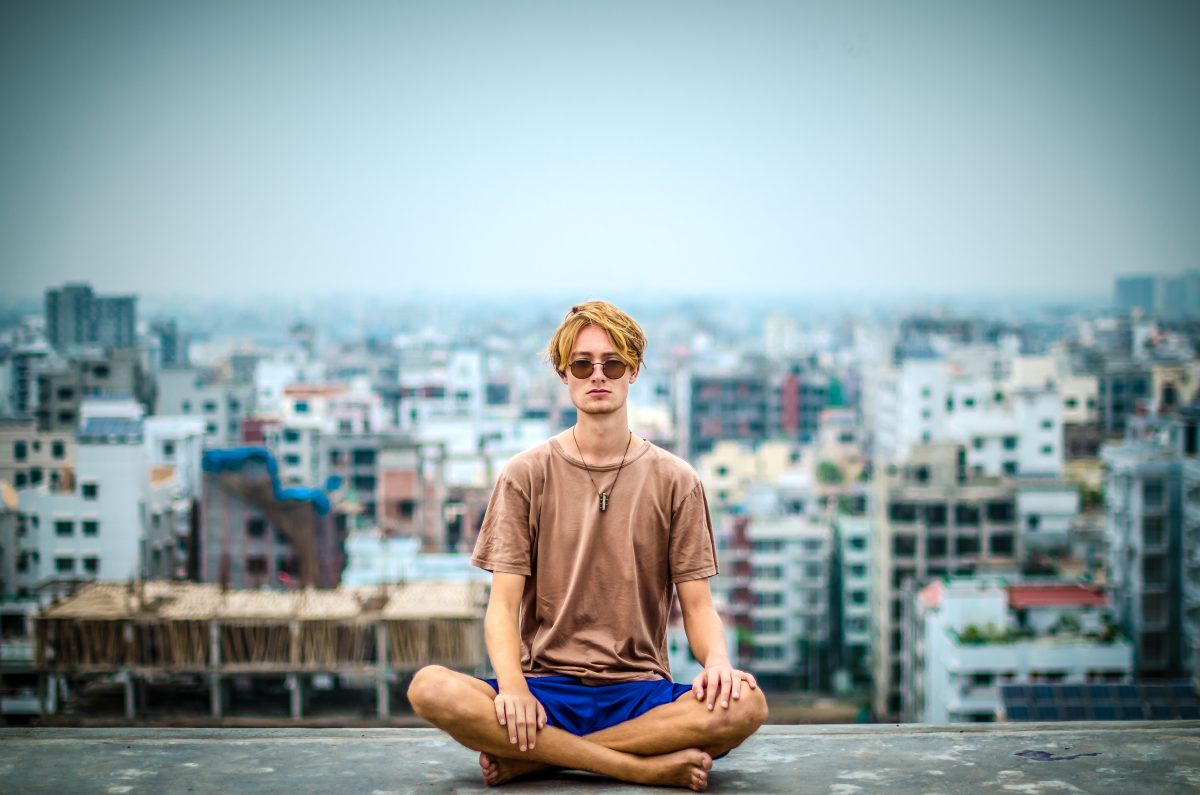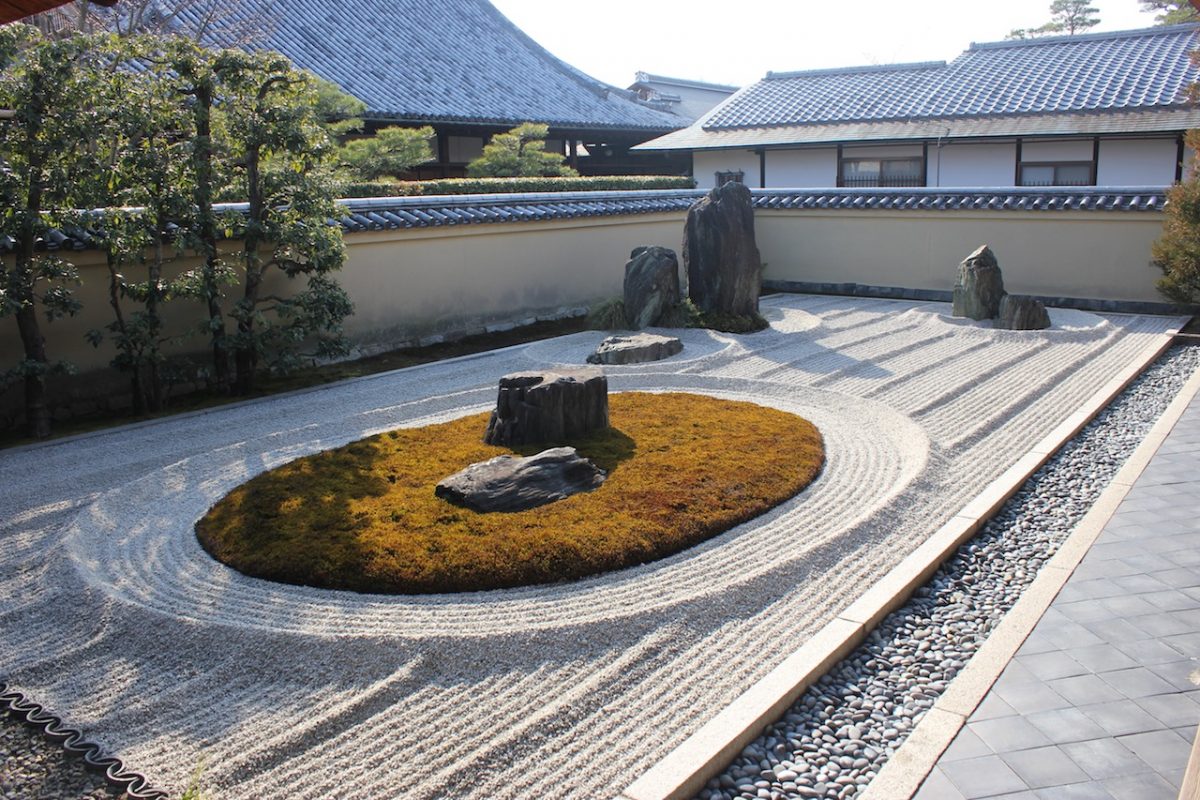When I first started meditating, I kept it up as a daily habit pretty darn well. There was however, one major exception: when I was travelling. Though travel and meditation are two key parts of my life, they haven’t always been so compatible.

Photo by Isabell Winter
When settled in one place it’s not too hard to allocate a spot in your home and routine and keep a daily practice. Life on the road is a different story. Days can vary massively and finding time to meditate isn’t always a priority. You want to go out, explore, see the city, hike a mountain, socialise with others. Sitting down with your eyes closed isn’t always top of the list. On top of that, if you’re sharing a room and have no private space, it can seem unrealistic.
Knowing that the fruits of meditation come with consistent rather than sporadic practice I realised I needed to find ways to make sure I got my practice while on the road. With a few fixes, I’m happy to report I managed it. Whether you’re planning a trip and want to keep up your practice, or already on the road and struggling to find time to meditate, these tips can help.
Go to Churches and Temples
Churches and temples are often some of the most beautiful and culturally significant buildings to be found in a city. Not only are they in every city but they are perfect for meditation; they are peaceful and have places to sit or kneel without distraction. By their nature they are places where people will leave you be to sit quietly with your eyes closed – they are built for spiritual practice. Wherever you are you will find an edifice of the local spiritual tradition and these are ideal places to meditate. I’ve meditated in impeccable Zen temples across Japan, the grand sanctuary at Lourdes, and rustic Taoist street shrines in Taiwan.

Rock garden at one of Daitoku-ji’s sub temples, Kyoto. Great spot for meditation.
Remember, it doesn’t always need to be a grand place; the smaller, lesser known places are always quieter and it makes a nice change. When I arrive in a new place, I find out where the closest church or temple is to where I am staying and often I find a local spot a short walk away to meditate everyday. I like to visit in the morning on the way out to start my day, but of course it’s possible to pop in on the way home from a day out or at any place you may happen to pass during the day. It’s a nice way to see the local neighbourhood and a more typical place of worship too. Go, take in the architecture and the history, and then pop yourself down for some zazen.
Parks & Nature
However much of a metropolis you may find yourself in you’ll be able to find a park in the city. The atmosphere in a park often lends itself to slowing down and relaxing. Take a stroll and do a walking meditation. If you have nice weather, sit on the grass or Buddha it and sit beneath a tree. If you are out for a picnic, take a minute before you eat to be present. If you are out on a hike or exploring a national park, choose a stretch of the walk to slow down for walking meditation. Choose a distance or an amount of time and allocate it to meditation.

The Japanese Garden in Buenos Aires
Waiting
Bus stops, train stations, airports, queues… wherever it is, there is always time spent waiting when you are travelling. Perfect time to meditate. Depending on where you are in the world, there may be a dedicated room for prayer or worship. If not, just try to find a relatively quiet place where you can relax and find your anchor. I set a timer, put my headphones in, close my eyes, then meditate. A pair of headphones allows me to hear the bells (I use a meditation timer app on my phone) and people passing by just assume I’m listening to music.
If I’m not familiar with the transport in the city or the exact whereabouts of where I need to be I will usually aim to arrive an hour early for an important bus or train ride. Often it turns out to be very simple and I end up with an hour spare. I always use this opportunity to meditate. It’s a large enough chunk of time to get seated and settled, and it’s time that’d just be spend waiting in a bus station – hardly the most thrilling part of travel adventures.
Watch Sunrise, Sunset, or the Night Sky

Sunrise from Huangshan (Yellow mountain), China.
This is one that will hopefully naturally sync with your routine. It often seems to be the case that travellers catch sunrises and sunsets far more frequently than those not travelling. It’s a real treat to view the colours at sunset, especially from a scenic viewpoint over mountains, or overlooking a new city, and it naturally coerces meditation.
Use the Hard Times as Opportunities
When you travel, as in life, things go wrong and you feel stressed or anxious. It’s unavoidable. In unfamiliar surroundings with little knowledge of local customs and language, far from family and friends, these feelings can be greatly heightened. Whether it’s a missed train, a lost wallet or your first time walking through a neighbourhood of which you aren’t entirely sure of the safety level… you will feel some kind of tension. And these are actually fantastic times to practice mindfulness. These are the times when we can really benefit from a clear and calm mind and a few deep breaths to calm down. In these situations I return to my breath. You needn’t try to repress whatever you are feeling but you needn’t allow it to overwhelm and consume you either. When you become aware of the unpleasant feelings or emotions bubbling up, just calmly observe them. Go to your breath or your anchor of choice and stay with it for a couple of minutes. You will slow down and your thoughts will become more clear. If a decision then needs to be made regarding your misfortune you will be in a much better state of mind to do so.
Communicate with Travel Buddies
If you are travelling with someone else, let them know that you are a meditator and want to keep up your meditation practice. Ideally they will be interested and want to meditate with you. This will make everything easier and you will even probably be more likely to make time to meditate now that you have a meditation partner. I travelled with a good friend before and he often even suggested times for us to meditate – perfect. If they aren’t a meditator then hopefully they will at least be understanding and happy to amuse themselves while you sit quietly. Or you can always wake up 20 minutes before them, or sleep a little later.
Still not meditating? See the final tips…
Allocate Unavoidable Spots in Your Routine For Mindfulness
It might not always be possible to have a regular dedicated formal sitting practice, and this is where mindfulness comes in. Mindfulness is basically meditation in a non-formal setting and regardless of your vagabonding lifestyle there are certain things that you will always do that can be used as exercises in mindfulness. While mindfulness can be practiced anywhere and anytime, it will be much easier in the beginning to practice during activities that are done alone and that can be done slowly- taking a shower, brushing your teeth, eating. Choose one or two of these, and every time you do that particular activity, make it an exercise in mindfulness, a mini-meditation if you will.
One I like to use is the ‘shower meditation’. Showering is an opportune time because it is a time you will be alone anyway, and something you do everyday (or atleast regularly, I hope). When showering, feel the splash of the water against your skin, the temperature, the pressure of the water. Be there in the shower and not somewhere else thinking, planning or worrying about the past or future. Be in that moment. When you realise you are thinking of something and your mind is elsewhere simply do as you would do in a meditation and bring yourself back to the present, back to the shower, the water, the sensation. When you turn the shower off take a few moments for conscious breathing while you drip dry, then feel the texture of your towel against your skin as you dry yourself.
Mindfulness really can be extended to anything. Just like meditation, it is the practice of choosing one thing, your anchor, and being totally conscious of it. Every time you notice your mind has wandered off, calmly bring it back. Simply do as you would do with a sitting meditation, but rather than using your breath or mantra as an anchor you will use the activity you are doing. Focus on the thing that you are doing, keeping your attention in the present moment and not getting swept up in unrelated thoughts.
Just Practice! However, Whenever.
As true as it is that a formal seated meditation in silence is the best foundation for day to day mindfulness, it might not always be possible to find a place where you can sit with perfect posture and without distraction, let alone time alone. In which case just practice wherever and however you can. If you haven’t meditated for a couple days and find yourself on a long distance bus journey then meditate there – sure it might not be the ideal environment- you mightn’t be able to sit upright with perfect posture and there may be a few bumps on the drive, but it’s still practice and is far far better than nothing.
If I come to the end of the day and I haven’t meditated I’ll ‘meditate myself to sleep’. I’ll lie flat on my back in bed, relax every muscle in my body and do one of two meditations; centre on my breath, or, focus on the feeling of the weight of my body on the bed. If you’ve ever done a yoga class then it’s similar to the savasana (corpse pose) usually done at the end. It’s great to use if you have problems sleeping.
– – – – – – – – – – – – – – – – – – – – – – – – – – – – – – – – – – – – –
Integrating meditation into your daily life is crucial to cementing the habit, and cementing the habit is crucial to becoming more mindful day by day. It can be a challenge when on the road but there are always opportunities.
So that’s it, go – hit the open road, explore, adventure…. and meditate along the way.
– – – – – – – – – – – – – – – – – – – – – – – – – – – – – – – – – – – – – – – – – – –
Recommended Read:
One of my favourite reads with great examples of how to integrate mindfulness into your life is Thich Nhat Hanh’s Peace Is Every Step: The Path of Mindfulness in Everyday Life. I first read it lying in a beach hammock in Thailand and have been more mindful for it ever since, both on and off the road. Full of wisdom and with a beautifully calming style, Nhat Hanh outlines techniques on how to live mindfully and gives examples of mini-meditations and exercises in mindfulness in daily life. I recommend it to anyone who is short of time to meditate and wants to live more mindfully.



